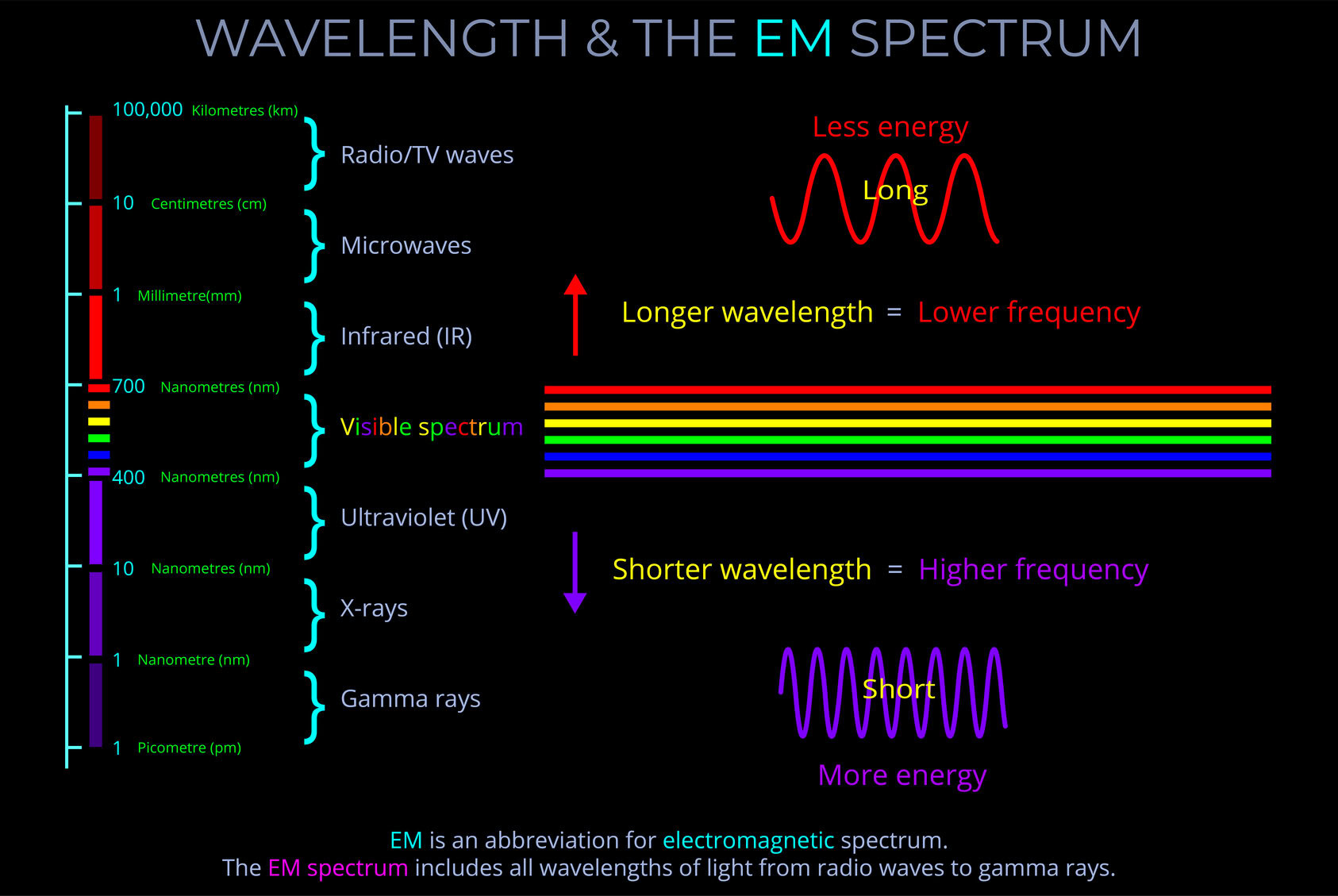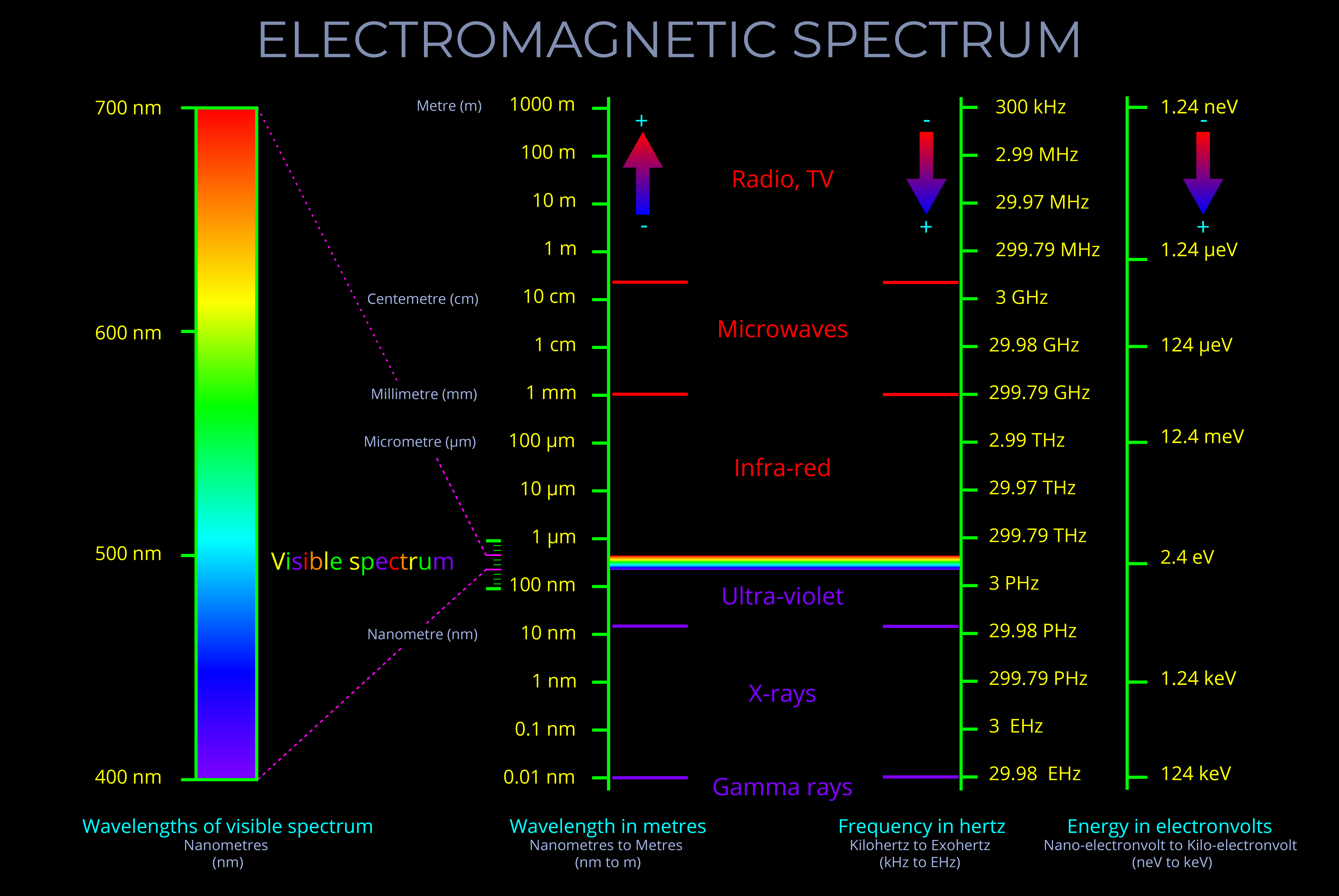The visible spectrum refers to the range of colours that the human eye can perceive, typically seen when light is refracted through a prism, water droplets, or similar mediums. It spans wavelengths from approximately 380 nm (violet) to 700 nm (red), with each wavelength corresponding to a specific colour, from violet through blue, green, yellow, and red.
- The continuous distribution of colours in the visible spectrum consists of a range of wavelengths, rather than distinct, separate colours.
- A diagram of the visible spectrum is a linear scale displaying the range of colours our eyes can perceive, arranged by their wavelengths with red at one end and violet at the other.
- This spectrum is naturally produced when light refracts through a prism or raindrops.
- The continuous distribution of colours in a spectrum arises because visible light consists of a range of wavelengths, rather than distinct, separate colours.
- Diagrams of spectral colours are usually presented as spectra: elongated linear bands with red at one end and violet at the other, allowing viewers to see as many colour gradations as possible.
- The process of separating light into its constituent colours is called dispersion.



